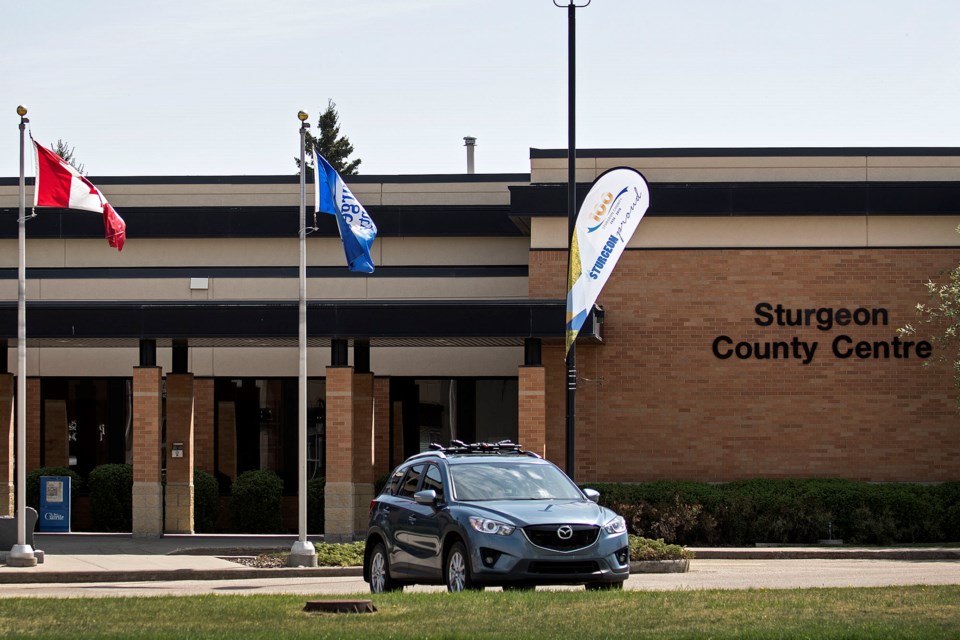Stink solution
Sturgeon County is pouring another $80,000 into its effort to squelch the stinky sewage at River’s Gate.
County council voted last Nov. 12 to spend $80,000 from its utility reserves to help manage excessive hydrogen sulphide levels in sewer lines in the Sturgeon River Valley and Cardiff.
The county started getting smell complaints from River’s Gate residents in 2017 after a new sewage lift station opened across the road from them, a report to council shows.
Following an $80,000 study, Jeff Yanew, the county’s utility and waste services manager, said crews now know the smell is being caused by excessive hydrogen sulphide gas at the River’s Gate lift station. Septic tanks are dumping their loads into the region’s sewer lines, creating more of the gas (which smells like rotten eggs) than the station’s filters can handle. Gas levels had reached up to 1,800 parts per million in the station – many, many times lethal levels, and way above the 3 ppm that produces an offensive odour.
Tests this year found adding calcium nitrate to the valley’s sewers reduced gas levels to about 20 parts per million, but part of that reduction may have been due to this year’s heavy rains, and the smell is still there.
Council heard crews plan to reroute sewage lines and install gas sensors in Cardiff and in the Sturgeon Valley to address the smell problem. Crews also plan to add a calcium nitrate injection system to the Allin Ridge reservoir. The building to house that system has pushed this odour management project about $80,000 over its $236,000 budget, hence the need for this extra cash.
Yanew said the long-term solution to this smell problem is to rebuild the region’s sewer network – a $10-to $20-million venture that could be funded through offsite levies.
The injection system building will be built later this year.
Regional partnership
Sturgeon County may dust off an old committee to try and find some regional cost savings.
County council voted Nov. 12 to direct administration to look into restarting the Sturgeon Regional Partnership Committee, and to co-host with Morinville a meeting of that group (which consists of Sturgeon County, Morinville, Bon Accord, Gibbons, Legal, and Redwater) to discuss shared efficiencies next January.
Morinville council passed identical motions that same day.
Hnatiw said in council the idea for these motions came out of a recent intermunicipal affairs committee meeting with Morinville.
“There was a need for all the municipalities to get around the table and have a discussion,” she said, and the county happened to have this regional partnership group lying around that hadn’t met for at least four years. Established in 2010, the group was meant to encourage cost savings and co-operation between its member governments.
Hnatiw said this group would give governments a chance to discuss issues not covered by the province’s intermunicipal collaboration frameworks (which the county is currently negotiating with the group’s members) and voice any concerns they have about said frameworks.
“I do think this is long overdue,” she said.
Coun. Wayne Bokenfohr supported the idea, saying it could bring transparency to the one-on-one collaboration framework talks and create new opportunities for regional collaboration.
Committee shake-up
County council is shaking up how its committees operate.
Council voted 6-1 (Coun. Karen Shaw opposed) to draft laws to expand the powers of its committee of the whole and strike a new governance advisory committee, and unanimously to draft amendments to create mandate letters, work plans and terms of references for its 11 advisory committees.
Council asked earlier this year for a review of its committee structure, with a view to expand the role of council’s committees and to create a group to take care of housekeeping matters.
The county’s committee of the whole currently has the power to receive presentations and reports but can’t refer them to administration, committees or council for follow-up action, said corporate services director Jesse Sopko. That creates problems when groups present to the committee and expect action.
Sopko recommended council empower committee of the whole to receive reports, monitor progress on council initiatives and refer matters to council, administration or other committees with or without recommendations – powers similar committees hold in other area governments.
Sopko advised council to issue mandate letters to its 11 advisory committees to spell out specific projects and goals it wants them to address. Those committees should create annual work plans and report their progress on their mandates each year.
Sopko said the governance advisory committee would see the mayor, deputy mayor and the next deputy mayor meet in public to issue proclamations, set agendas and perform other minor matters.
Sopko also proposed that council create a consent agenda so various items, with unanimous consent, could have their recommended actions approved all at once without debate. Any councillor could pull an item off this agenda if they want it to be debated.
Hnatiw said she was glad to see these changes coming, as many residents were confused at how their presentations at committee of the whole didn’t result in action. Mandate letters would strengthen council’s ties with its committees and better target the efforts of its volunteers.
These new bylaws are set to come back to council next February and June.




